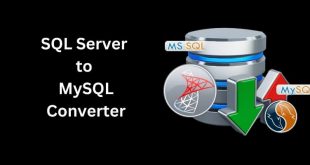Hey guys, today in this article, I am going to discuss how should you choose your dynamic application security testing tool? So keep reading.
Dynamic Application Security Testing (DAST) focuses on testing the runtime version of your application for potential vulnerabilities. DAST tools are usually scanners that simulate specific attack methods and send them as requests to the application to impersonate malicious hackers.
It then evaluates the response received from the application and analyzes to capture any abnormalities. All of the potential vulnerabilities are then recorded for reviewing later and for suitable remediation suggestions.
DAST scanners have always been preferred for application security testing (AST) by enterprise security teams, penetration testers, etc since this tracks both the vulnerabilities caused by the team’s error and those within the open-source components in the application.
The Working of the Dynamic Application Security Testing Tool
The DAST scanners begin with the host where the application is running which could be a publicly available website or application.
It’s always better to deploy DAST in the pre-production phase since the scanner takes on the role of a hacker and the actions taken could modify or erase sensitive data.
You must always protect your database when using the DAST method to prevent this from happening.
The next step is to start an HTML spider that can identify all possible paths and actions, such as the Ajax spider for single-page applications, the OpenAPI specification for the REST APIs, etc.
The goal of the DAST tool is to cover as much area of the application as possible while creating backups simultaneously.
The third step is to start conducting a series of tests which includes sending multiple requests to all the identified paths and endpoints in the previous step.
It will then study the responses from the application and monitor all possible vulnerabilities. The findings are then reported in a predefined structure to convey the maximum possible information to all relevant stakeholders, including the remediation recommendations.
5 DAST Tools Commonly Used
Whether you’re getting started with your first attempt at application security or you’re looking to expand your arsenal of testing methodologies, there are many DAST tools that can help in this security agenda.
1. Burp Suite
More commonly used as one of the best penetration testing tools, it’s best suited for manual testing procedures by in-house application security teams. The enterprise edition of the tool allows the leveraging of agent deployments.
2. Netsparker
This is one of the established DAST tools that help enterprise security teams by assisting in on-premise deployment and providing professional services to lead rollout.
The scanner feature runs against production applications by using its scheduling capability.
3. ZAP
This is an open-source DAST scanner and is widely used throughout firms and industries as an application security scanner.
It mostly focuses on the automation of repetitive tasks, allows scanning from a desktop application, and automated scanning through an API.
4. StackHawk
Another modern DAST tool focuses on the automation aspect in the continuous integration/continuous development (CI-CD) pipeline.
The tool is especially useful for the early detection of various vulnerabilities before the application is released by integrating security practices into the engineering workflow.
StackHawk is built on top of the open-source foundation of the ZAP tool and provides various unique characteristics such as automation, fixes of security issues, and precise vulnerability detection.
5. InsightAppSec By Rapid7
This DAST solution is also another long-standing option in the enterprise security industry, supporting on-premise deployment and scheduling scans during the production phase. It’s a good step before the firm looks into investing in DevSecOps.
Criteria For The Selection Of Dynamic Application Security Testing Tool
Since there is a wide range of options available, it’s important to know what you’re looking for before selecting the right DAST tool.
Scanning Frequency
What is the ideal frequency for the scheduling testing procedure? Most of the application security is automated and integrated with the DevSecOps pipeline.
Early implementation in the CI-CD pipeline will help in faster detection of vulnerabilities, less wastage of resources, and quick fixing of vulnerabilities.
Scans can also be conducted against foundational services and APIs and not just client-side aspects which lead to a wider scope of testing.
Schedules and manual scans are also equally important and should be incorporated into the security strategy.
Targets In The Production Vs. Pre-Production Stages
Scanning in the pre-production stages allows the tester to catch most vulnerabilities before the application is live and not be restricted by rate limiters or web application firewalls (WAFs).
Who Uses The Tool?
As a security analyst or as a part of the engineering team, the use of the tool differs in different hands. Most tools are developer-centric, allowing them to resolve many vulnerabilities and implement the right fixes in the workflow.
Deployment Model
It also matters if the DAST techniques are being used on-premise or as a SaaS solution.
This article covers the basics of choosing the right dynamic application security testing tool for the firm’s security goals.
It’s important to know such basic details so that the selection of the testing provider can be accurate.
 Free Web Resources , psd, mockups, & web templates Best WordPress Themes & Best Html Templates
Free Web Resources , psd, mockups, & web templates Best WordPress Themes & Best Html Templates








